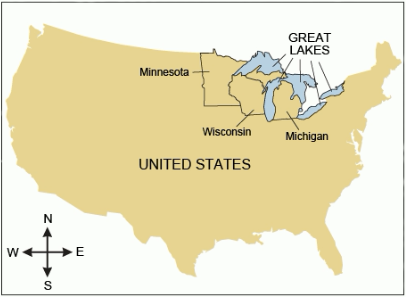

 In nineteenth-century America, practically everything that was built involved wood.Pine was especially attractive for building purposes.It is durable and strong, yet soft enough to be easily worked with even the simplest of hand tools.It also floats nicely on water, which allowed it to be transported to distant markets across the nation.The central and northern reaches of the Great Lakes states—Michigan, Wisconsin, and Minnesota—all contained extensive pine forests as well as many large rivers for floating logs into the Great Lakes, from where they were transported nationwide.
In nineteenth-century America, practically everything that was built involved wood.Pine was especially attractive for building purposes.It is durable and strong, yet soft enough to be easily worked with even the simplest of hand tools.It also floats nicely on water, which allowed it to be transported to distant markets across the nation.The central and northern reaches of the Great Lakes states—Michigan, Wisconsin, and Minnesota—all contained extensive pine forests as well as many large rivers for floating logs into the Great Lakes, from where they were transported nationwide.本文重点词 59
文中划选/双击的生词、加粗重点词已收纳至词盒
可随时点击词盒查看哦~